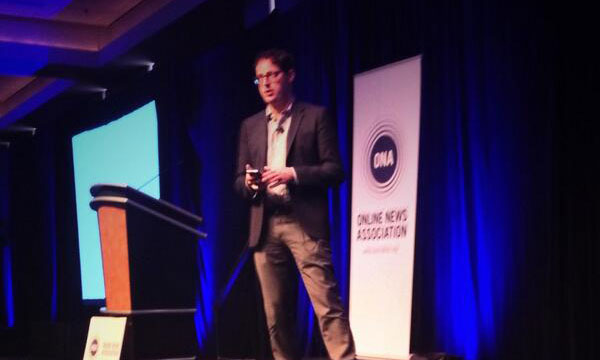
Advice From Nate Silver: Don’t Trust Your Assumptions
In his conference message to journalists about the important role that data can play in their work, the statistician-blogger challenged them to continually test their assumptions about the world—a point that should resonate in associations as well.
Even though he was addressing a room filled with people more skilled with words than numbers, Nate Silver, the acclaimed statistician and editor-in-chief of the FiveThirtyEight blog, decided to test his luck at getting the group to understand a little bit of algebra.
Speaking to more than 1,400 journalists at the Online News Association’s (ONA) annual meeting in Atlanta last week, Silver presented a slide with Bayes’ Theorem, a concept he dives into in his book The Signal and the Noise: Why So Many Predictions Fail, But Some Don’t:
Got it?
“You don’t need to worry about the algebra so much as the philosophy behind it,” Silver said, generating a collective sigh of relief from his audience (and potentially you, dear reader).
In Bayes’ Theorem, you start with a prior belief or a set of assumptions about the world or about the likelihood of some outcome, framed in the form of a probability, Silver explained. When new evidence is presented or you acquire more data, you put that conception to the test and then revise your belief based on how that new evidence fits into your theory. In other words, you allow your view of the world, or something in it, to be constantly updated as new, high-quality information becomes available.
So how can this theorem be successfully applied? You have to be willing to welcome change and toss out outmoded ways of thinking—an attitude that associations have constantly been implored to adopt over the years.
“Bayes Theorem does require two things,” said Silver, who gained fame when he used statistical models to correctly predict the outcome of the 2012 presidential election. “First you have to be disciplined and accountable enough to actually put your ideas to the test and change your preconceptions when your theory seems to be wrong. And second … you have to acknowledge that you do start out with some beliefs, some assumptions, some prior notion of what the world looks like.”
Claiming to be an unbiased observer or that you have no preconceived notions about a particular situation can derail the process, but when applied correctly, it can produce profound results, said Silver.
“The wonderful property of Bayes’ Theorem is something called convergence. As you test and refine your beliefs, you get closer and closer to the true objective world all the time, even if your initial take on the situation was quite wrong,” he said. “But the whole idea is to be willing to reevaluate those prior beliefs as new evidence comes in.”
Full audio and video of Silver’s keynote can be found on ONA’s conference website.
How do you ensure that your organization remains open to new ways of thinking based on new information? Share your ideas in the comments.
(photo by Jen Mizgata/Twitter)







Comments